
[152] Fulica atra, Coot
Introduction
Fulica atra, the Eurasian or Common Coot, is a widespread and very common black bird, generally seen on or near water. It is also called the Australian Coot. There are several other similar species of Fulica, known as Coots, found in the Americas, but the Eurasian one is usually just called a Coot in Britain.
Taxonomy
Kingdom – Animals
Phylum – Chordates
Class – Aves (Birds)
Order – Gruiformes (Cranes and Rails)
Suborder – Ralli (Rails and a few others)
Family – Rallidae (Rails, Crakes, Moorhens and Gallinules)
Genus – Fulica (Coots)
Scientific Name – Fulica atra
Name
Coot is an Old English word of uncertain origin, used for Fulica atra and other diving water birds. (It is also not clear why, in the Eighteenth Century, the same word acquired the meaning of a silly person or old person.)
Fulica is Latin for a Coot and atra means black.
(The word rail comes via French as an onomatopoeic form of their cries.)
Description
Rallidae is a family of medium sized ground birds with little in common with Cranes, their closest relatives. They have small, rounded wings and rarely fly, apart from migration.
Fulica atra is a roughly duck-sized bird. It is almost totally black with a white bill extending to a frontal shield, from which the phrase ‘as bald as a Coot’ (used as early the Fifteenth Century) comes.
At first glance it may be confused with the Moorhen, a very closely related bird often seen in the same places as Coots. The Coot is much larger and the white front of the Coot is a distinguishing feature.


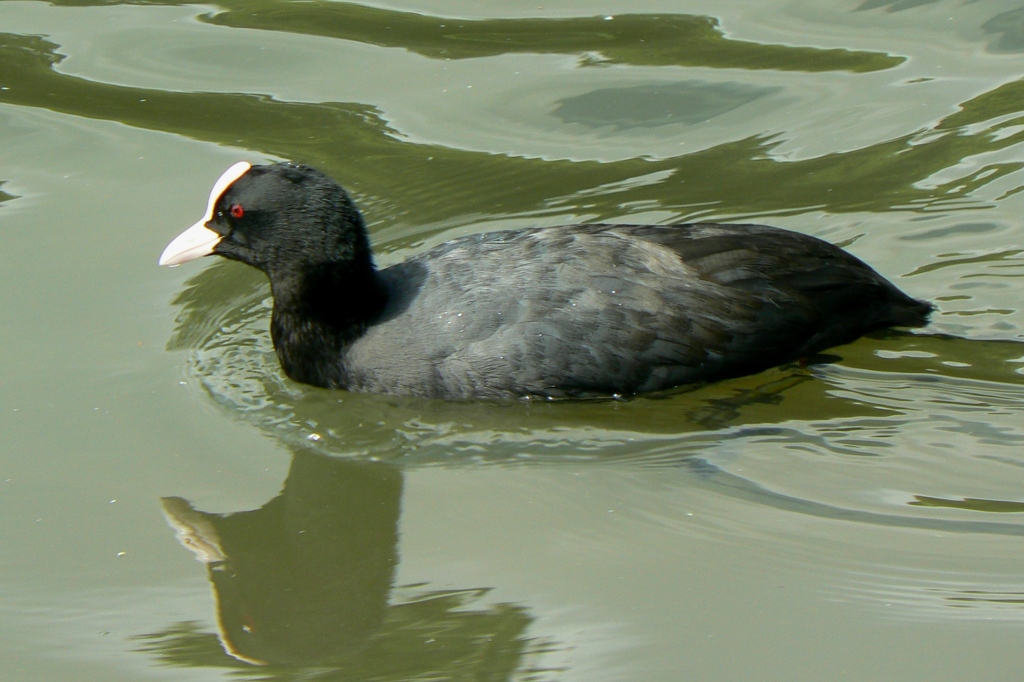




Like other rails, Coots have large, lobed feet adapted to paddling in water or walking on floating vegetation.
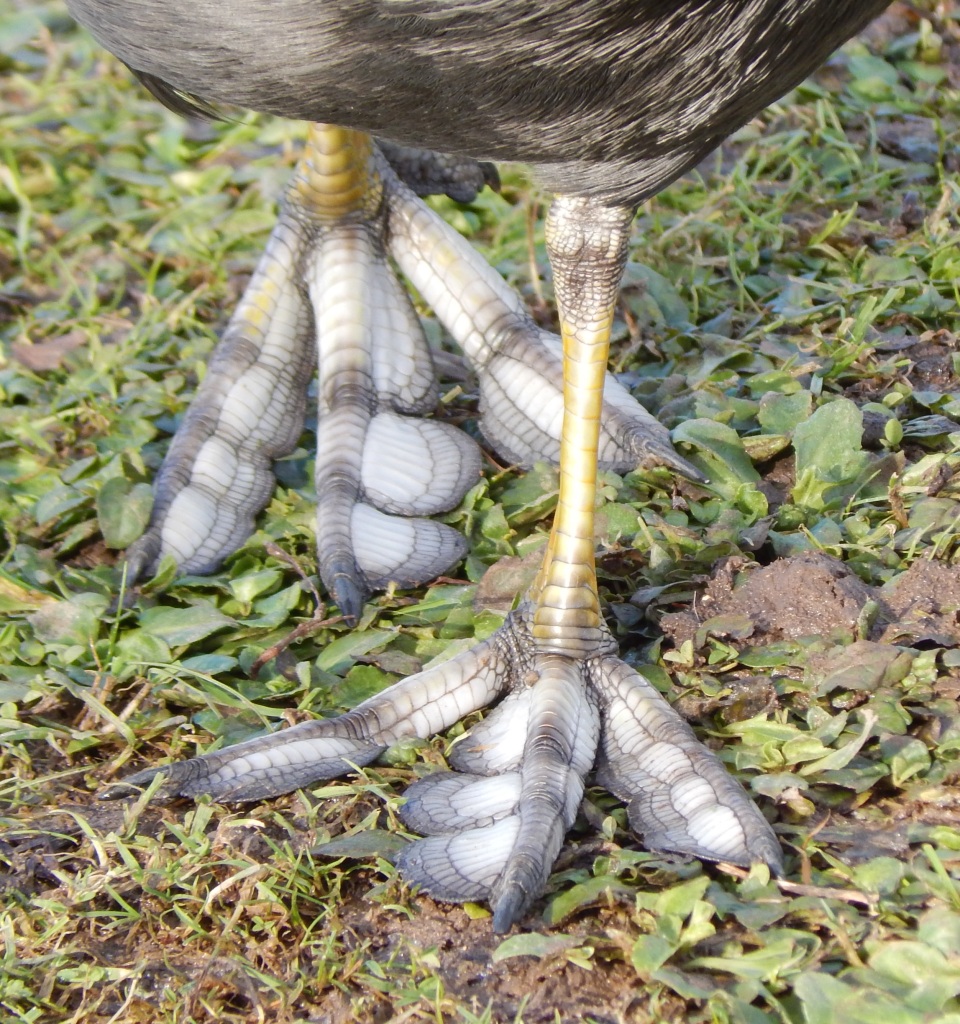
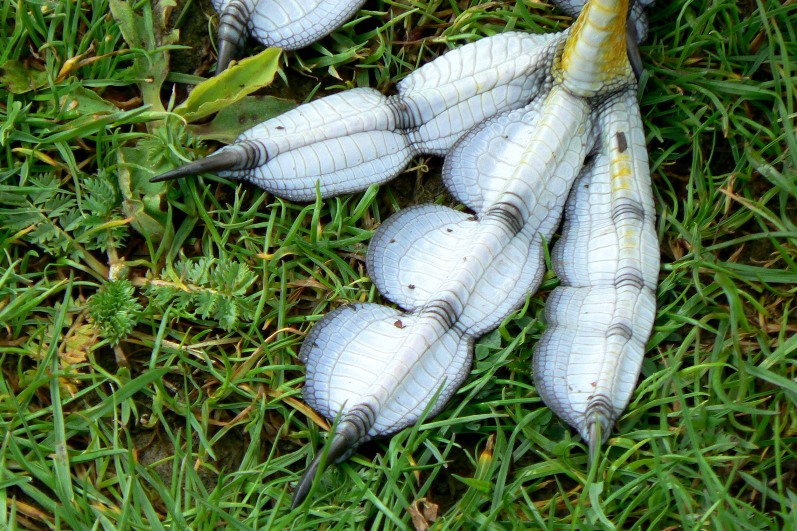

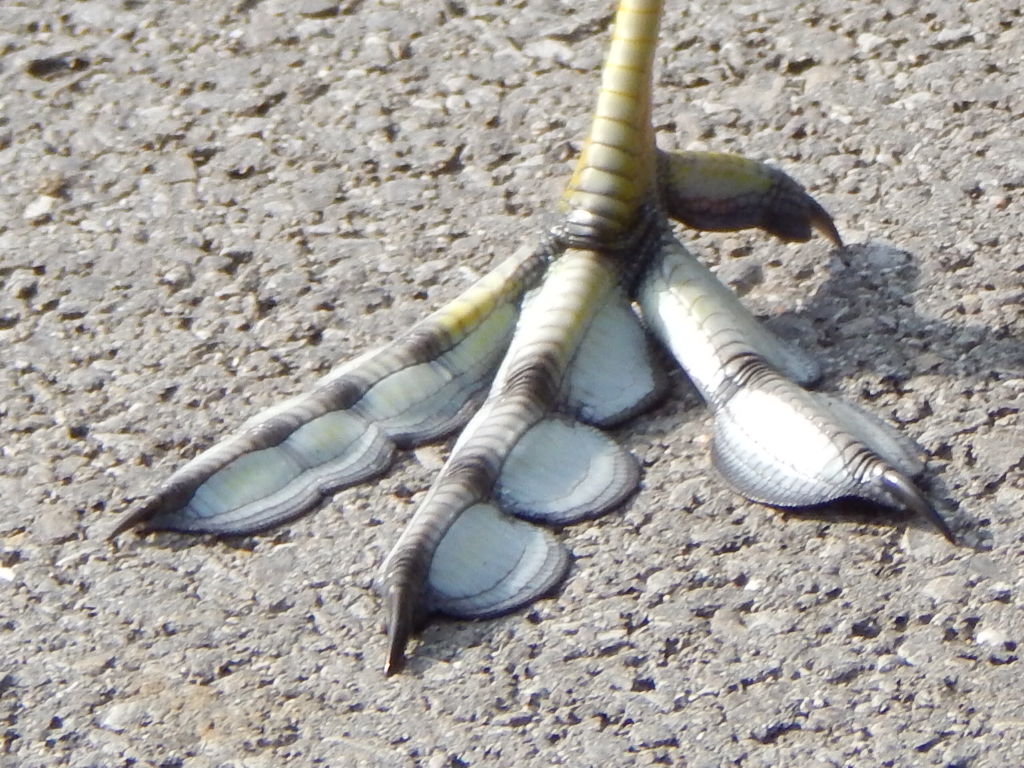

It generally breeds by building a small island for a nest in water.



Young Coot chicks have a recognizable bright red head surrounded by orange-yellow hairs. Their big feet are already in evidence.



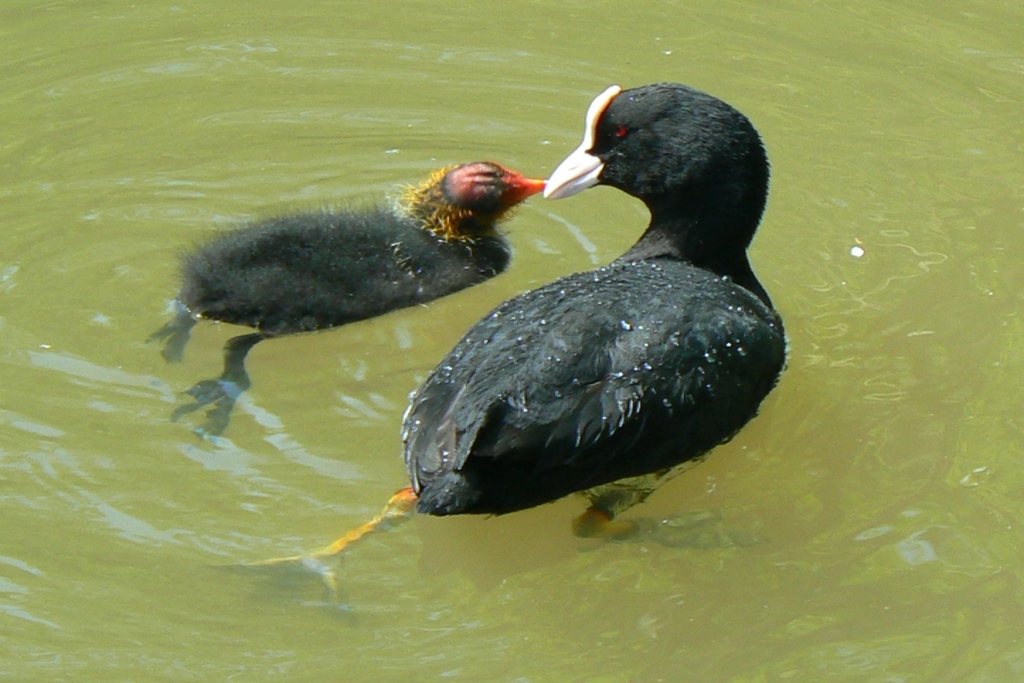


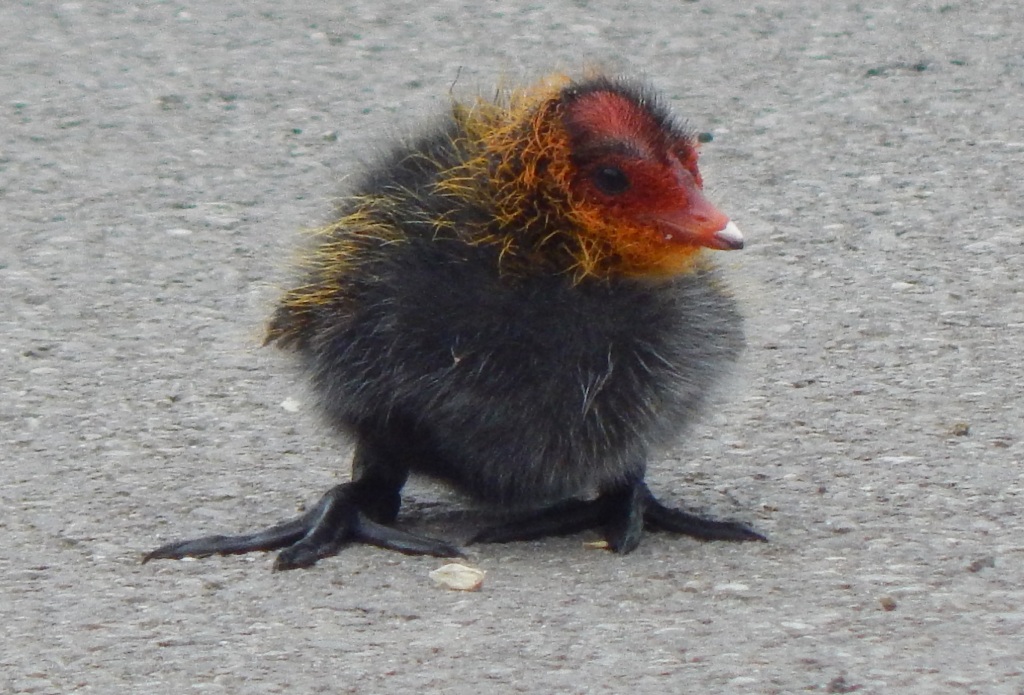

As they grow older, they become more loke their parents.




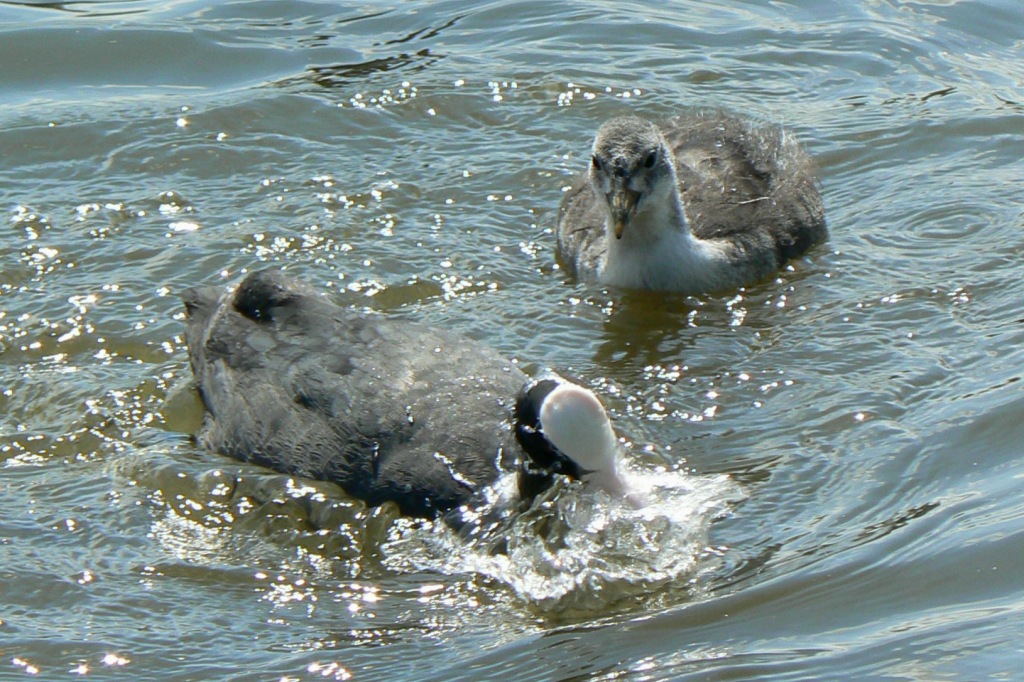

The Coot makes a number of noises that could never be described as songs.
Coots are almost always seen on or near lakes. They are omnivorous and feed on algae, vegetation, seeds and fruit as well as the eggs of other birds and small live prey. They are said to graze on land but I don’t think I have ever seen one more than a metre away from water.
Habitat
Fulica atra is widespread over Eurasia and also found in Australia, New Zealand and the extreme north of Africa. They really like to be on or near water.
Other Notes
I have been thinking about these birds for this blog and have come to the conclusion that I have never seen a Coot fly or attempt to fly. The same applies to Moorhens and Water Rails.
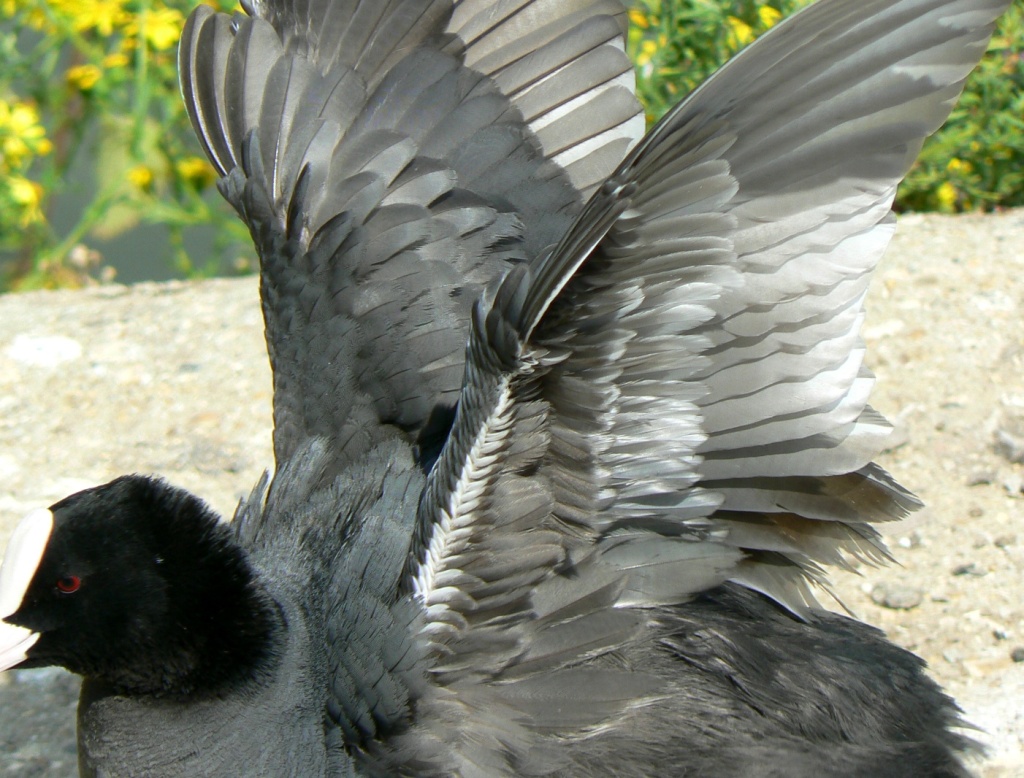
See also
[157] the Moorhen and [293] the Water Rail are very closely related birds.
Cranes, related birds that don’t look similar, are coming soon.

Pingback: [166] Grus grus, Crane | The Species of Britain
Pingback: [273] Podiceps cristatus, Great Crested Grebe | The Species of Britain
Pingback: [294] Rallus aquaticus, Water Rail | The Species of Britain